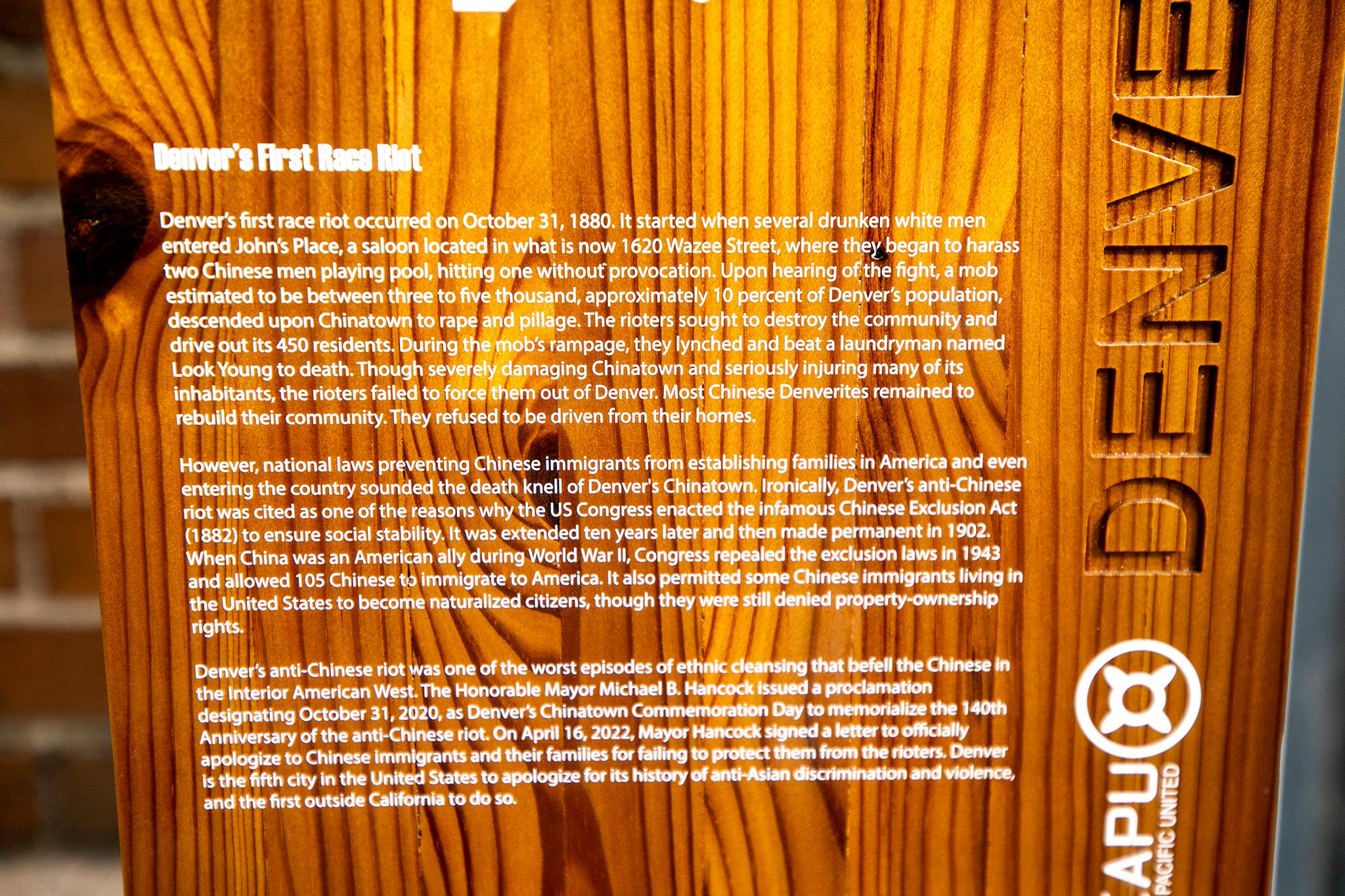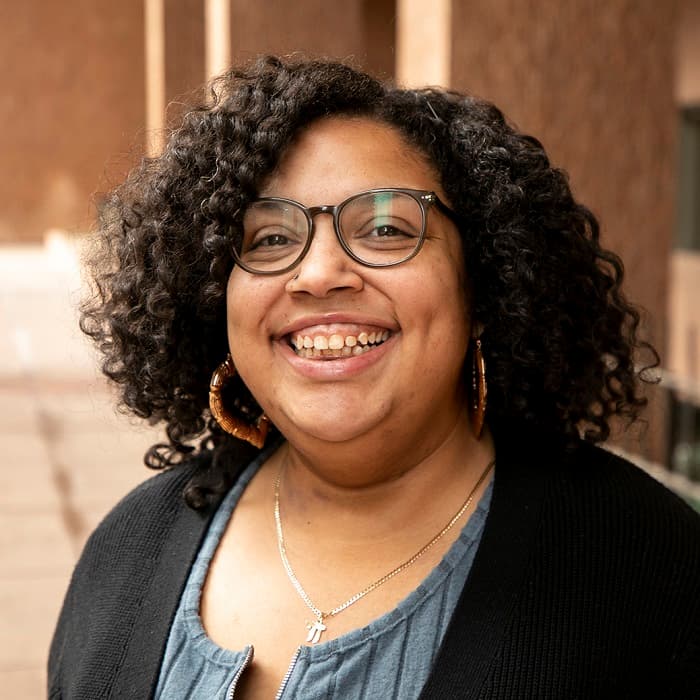It's a party celebrating recognition, history and the future.
Colorado Asian Pacific United (CAPU), a coalition of Asian Americans and Pacific Islanders in Denver, will celebrate the completion of a mural and the installation of several historical markers with a block party on Saturday, from 3-7 p.m. at 1890 Lawrence St.
"It feels reaffirming that our history is no longer something that's forgotten or shoved under the rug or shelved away," said Joie Ha, Vice Chair on the CAPU board.
The creation of the mural and historical markers were part of the Reimagining Denver's Historic Chinatown project, started by the Denver Asian American Pacific Islander Commission, along with CAPU and other organizations and Asian-American leaders in the city.
The project's goal was both to bring awareness to the history of Denver's once bustling but now destroyed Chinatown, as well as to commemorate the Chinese and Asian communities in the city's present and future.

From the 1870s to 1880s, a portion of what is now known as LoDo was home to a flourishing Chinatown packed with Chinese businesses and restaurants. But on Oct. 31, 1880, the area was destroyed by white rioters.
An argument broke out between Chinese and white patrons at John Asmussen's Saloon and a riot broke out. Look Young, a Chinese laundry worker, was fatally beaten during the riot. Chinese-owned properties were burnt to the ground and Chinatown never recovered from the incident.
The only recognition from the city of the event was a marker in LoDo titled "Hop Alley/Chinese Riot of 1880," which told the story of the riot through the lens of white historians. For example, the plaque applauds and names several white residents "who showed remarkable courage" in assisting Chinese residents, but never names Young or the other victims.


Exactly a year ago, Denver city officials removed the downtown plaque after issuing a formal apology for its role in the racist riot.
"When we first started this work, even within the Asian-American community, so few people knew that we used to have a Chinatown," Ha said. "There just really wasn't much evidence of it and if you walk to the area where it used to be, there is no way that you can tell that it had cultural significance to the Chinese community. Even the Chinese community itself was not super familiar with it because the folks that were at that Chinatown, a lot of the families left and we only technically have two existing families from the 1800s that we are familiar with."
With the plaque being removed, Ha said the next step in raising awareness about the riot and the area's cultural history was to create the first-ever mural and historical markers dedicated to accurately telling the story.
The mural, at Denver Fire Station 4 near Sakura Square, was completed in June by artist Nalye Lor. The colorful piece mixes imagery of silhouetted railroad workers and laundry workers, along with a railroad track that turns into the infinite noodle that represents hope and longevity. There's a cup of green tea, chopsticks and the sun to represent the area's past, present and future.
On the far left is a Chinese Proverb written in Chinese that says, "Be not afraid of going slowly. Be afraid of standing still."
Three markers were installed earlier this month, Ha said.

The first at 1520 16th St. tells the history of the former Chinatown. It tells the story of the first Chinese immigrant who arrived in Denver in June 1869 by way of working on the Transcontinental Railroad. It also tells the story of the growth of the Chinese businesses and how white residents grew hostile to the population and "perceived them as an economic and cultural threat."
The second marker at 1620 Wazee St. accurately explains the race riot, what occurred that day and the aftermath.
The third marker at 1890 Lawrence St., the same location as the mural, is a dedication plaque to Look Young. It tells the story of his death and how his attackers were tried and found "not guilty."
"The fact of the matter is our communities have been asking for things like this for years but it was only recently that I think people are interested in funding this work or interested in seeing our community or understanding that our community is here and also has a lot of struggles that we've gone through historically and are still going through being a minority in this country," Ha said.

The block party will host different Chinese and Asian community groups at the event providing resources and more information on Asian history in Denver and Colorado, including Great Wall Chinese Academy. There will also host activities for children and Asian food vendors including Tea Street and Yuan Wonton, He said.
The program will start around 4 p.m. with some performances, speeches and, ultimately, the unveiling, Ha said. Folks who attend will also get a chance to vote on the name of the mural.
Ha said this push to inform Denverites about the city's Asian and Pacific Islander history has been focused on the Chinese community but in the future CAPU plans to do similar pushes on the Japanese and Vietnamese communities in the city. She added that ultimately, the organization and other stakeholders would love to see a museum dedicated to the history of the Asian population in the city.
For now, folks can attend the block party and immerse themselves in one part of Denver's small but deep cultural history.
"I want people to come away feeling refreshed and reinvigorated and I want people to feel validated and seen," Ha said. "I also want people to have learned something. I've been saying this for the past few years that no one really knows about the Chinatown but I feel like we're starting to get to a point where people are familiar with it ... I think I just want people to learn and feel in community."













